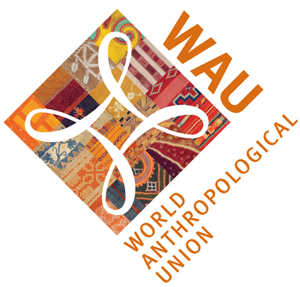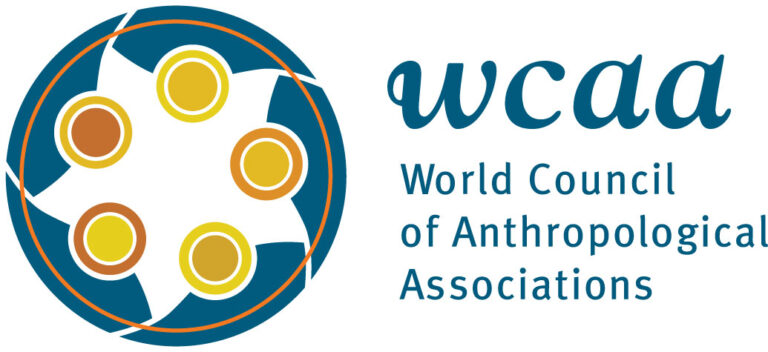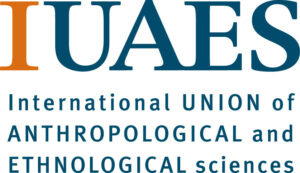市民社会と政治社会のあいだ、西洋とインドのあいだ
田口陽子
一橋大学
ローカルな人類学者がグローバルな人類学界に向けて「自分の言葉で」自分の研究を発信するという企画1に招待されたこの機会に、インドの「市民社会」についての私の研究を少し違う角度から振り返ってみたい。インド系の研究者が大きな貢献をしてきたポストコロニアル研究は、西洋の学問的な制度や言語的な枠組みに依拠せざるをえない状況で思考することの困難と可能性について論じてきた[e.g. Chakrabarty 2000]。そうした研究に魅力を感じてきた私は、西洋の規範的な概念である「市民社会」が、インドの研究者によってどのように議論され、現地の活動家たちによってどのような文脈で用いられ、いかなる政治的な実践を生み出しているのかを研究してきた。ここでは、私の博士論文の概要を紹介したうえで、日本語でこの研究を行ったことについても考えてみたい。
* * * * *
私はインド、ムンバイで市民運動についてフィールドワークを行い、「市民社会と政治社会の間:インド、ムンバイの市民をめぐる運動の人類学」という題目の博士論文を書いた[田口 2016]。私が滞在した2000年代のムンバイでは、都市の美化運動、官民のパートナーシップの推進、反腐敗運動などの活動が盛り上がっていた。これらの運動は、都市のミドルクラスからなる「市民社会(civil society)」の運動だとされていた。
市民社会は、西欧において、好ましくないもの(自然状態、未開、国家など)の反対としての[Kaviraj 2001]、あるいは発展段階を示すものとしての、規範的な概念として成立してきた。こうした性格上、市民社会を人類学の分析概念として用いることには、さまざまな困難がある。特にインドでは、西洋の概念を普遍的な概念として非西洋社会の分析に用いることを批判してきたサバルタン研究の影響力が大きい。例えばパルタ・チャタジーは、市民社会は西洋の啓蒙主義にもとづく自律的な市民の領域であり、インドでは少数のエリートにしか当てはまらないとした。そのうえで、インドで重要なのは、市民ではなく「統治される者」たちが、共同体の論理を活用しながら主権者に対して要求を行う「政治社会(political society)」であると論じた[Chatterjee 2004]。こうした背景にもとづき、近年の市民運動も、ミドルクラスがサバルタンを排除する利己的な運動であると批判されてきた。
このような学術的な論争は、現場の実践と相互に影響を与えあっている。例えば、今日のインドの市民活動家は、自らを政治社会と区別し、「非政治性」を主張しながら活動を展開している。そこで私は、この概念の動きと実践の動きの入り組んだ関係を解明することを目指した。さらには、人々が「市民」として都市空間や他者や自己に介入しながら活動するなかで、異なる文脈からなるイメージが作られていることに注目した。そしてそのイメージが、どのような概念や実践のつながりから成り立っているのかを記述するために、マリリン・ストラザーンの「部分的つながり」[Strathern 2004]と、インドの民族社会学を参考にした。
ストラザーンが部分的つながりのイメージのひとつとするのは、機械と身体がつながって動いているダナ・ハラウェイのサイボーグである。部分的つながりは、異質なものや不釣合いなものが、お互いに部分になることで、ひとつのシステムに包摂されることなく関連しながら生成していく動きを示している。そこでは、立場の異なる部分的な論争が、実践上なんとかつながりながら、しかし相互にずれや断絶を生み出すことで、カウンター・ポジションに拡張する。ここにおいて、ある部分は何かの一部でありながら、同時に異質な何かの一部でもある。ストラザーンによると、フェミニズム研究は、自らの内部にこうした不釣合いな外部の多声性を再現している点にその特徴と切れ味がある。
私は、インドの市民運動も、この部分的つながりを体現している点にその切れ味があると考えた。例えば、人気作家のチェータン・バガトやムンバイ行政が「利益集団」としての「ミドルクラス」に訴えるのに対して、美化キャンペーンや選挙運動は普遍的で属性を問わない「市民」に訴える。さらにそれらの運動が展開していく実践において、活動家は、神や共同体との関係にもとづく「ヒンドゥー」としての奉仕の精神を参照することで、市民的で個人的な責任を果たそうとしている。このように、それぞれ異質なものが、一方が他方を完全に包摂することなく、異なるポジションを維持しているのである。
さらに、こうした運動を理解するためには、境界づけられた自律的な「個人(individual)」としてのみではなく、複数の関係性によって成り立っているムンバイの市民のあり方にも目を向ける必要がある。この点を探究するため、市民社会論とは一見断絶している人類学的な人格論を参照し、外部との関係から作られるインドの「分人(dividual)」概念を検討した。「インド的思考」を追求した民族社会学において、マッキム・マリオットは、食事や儀礼、会話における「サブスタンス=コード(substance-code)」のやり取りから作られる分人概念を提示した[Marriott 1976]。さらにA.K.ラーマーヌジャンは、サブスタンス=コードの動きを方向付け、分人を成り立たせる「文脈依存的(context-sensitive)」な規則と、そこから自由になることを目指す「文脈自由(context-free)」への運動の循環を提示した[Ramanujan 1989]。これは、「インド的思考」のなかに、外部の視点を取り込みながらポジションとカウンター・ポジションを作り出す動きがあることを示唆している。市民をめぐる運動は、異質なものが部分的につながって動くサイボーグのように、文脈依存と文脈自由の動きを示すイメージだと考えられる。
博士論文では、この複数のイメージのさまざまなヴァージョンを民族誌的に描いた。具体的には、1)新聞の美化キャンペーン「汚れとの戦い(Fight the Filth)」、2)行政と市民のパートナーシップ「先進的地域管理(ALM)」、3)市民候補者の選挙運動「ムンバイ227」という三つのプロジェクトを事例とし、各事例を横断しながら、市民社会と政治社会の緊張関係、腐敗と反腐敗の絡み合い、ウチとソトという空間認識の変容、個人と分人の相互作用を検討した。ムンバイの市民をめぐる運動は、市民社会と政治社会というポジションとカウンター・ポジションを行き来しながら、その狭間を概念化し、可視化しようとしていた。そうすることで、その狭間で運動を続けることが可能になっていた。
部分的つながりは、互いが互いの道具になることで、潜在的な能力を引き延ばしたり、新しく生み出すポジティブな可能性を有している。しかし、有機的なヒンドゥーの国を夢見るシヴ・セーナーへの奉仕がムスリムの虐殺につながることもあるように、分人化と部分的つながりは、権力と暴力の拡張に寄与する危険性も有している。この点を踏まえてムンバイの市民運動を振り返ると、その政治的な意義に新しい視点を加えることができるだろう。市民をめぐる運動は、奉仕といったヒンドゥー的価値や国民国家を中心としたナショナリズムに突き動かされながらも、そこには回収されることのない企業家的価値や個人のインテグリティを追求し、新たな市民像を作り上げていた。すなわち、政治社会にも市民社会にも完全に組み込まれることなく、狭間に留まることこそに、部分的なつながりとしての運動の政治性が見出せるのである。
* * * * *
以上でみてきたように、「西洋」の市民社会概念は、「インド」にそのまま輸入されたのではなかった。そうではなく、西洋とインドを比較しながら、市民社会という概念を批判的にとらえる研究者や活動家、現地の人々の実践の中で、カウンター・ポジションとしての政治社会との独自の関係が生まれ、そこからインドの市民社会が立ち現れていた。このように博士論文では、「西洋」の市民社会と「インド」の市民社会(参照した議論ではどちらも“civil society”という言葉が一般的に使われていた)の関係と動態について検討したが、その分析を日本の人類学者が日本語の「市民社会(shiminshakai)」という概念を用いて行っていることについては正面から論じることができなかった。もちろん、私が日本で生きてきた経験や現実を把握するための言語が、フィールドワークと記述における比較の前提として影響を与えていることは間違いない。しかし、いくつかの問いは残る。「日本」の市民社会を背景に、「西洋」の市民社会と「インド」の市民社会を比較することが、記述言語である「日本」の「市民社会(shiminshakai)」概念にどのような影響を与えうるのか?その営みから、どのように「人類」にとっての「市民社会(civil society)」――齟齬や誤解を含む翻訳語でしかありえないが――の理解を深めていけるのか?そして、こうした問題に取り組むためには、どのように書けばいいのだろうか?本研究の出発点であったポストコロニアル(サバルタン)研究や、ストラザーンの人類学を継承するならば、日本語で考え書くという問題についても考えていかなければならないだろう。
こうした問題意識の延長として、私は最近、ポストコロニアル研究と人類学の接合の地域的な違い(例えば南アジアとラテンアメリカ)を考慮したり、ポストコロニアル研究と科学技術論の接合領域から「思考不可能なもの」を捉えたうえで政治に介入しようとする人類学者の動きについて検討する作業をすすめている[De la Cadena 2017; 田口 2017]。言語が捉えられる現実をめぐる、そしてその現実を翻訳する可能性と不可能性をめぐる古いテーマは、近年の人類学において(例えば認識論ではなく存在論を強調するような領域においても)、ますます重要になっているように思われる。
差異をなくし等価にするための翻訳ではなく、「何かが欠けていることに気づく」ことを可能にするような翻訳[Clifford 1997: 39]を、どのようにより「よく」行うことができるのだろうか?日本語で行う人類学と翻訳の実践を続けるなかで、この問いは探求されていくだろう。そして、この(日本語で書き英語に翻訳された)記事からも、どこか別の文脈で、ずれと意外な関心のつながりが生まれていけばうれしく思う。
Between Civil Society and Political Society, Between the West and India
Yoko Taguchi
Hitotsubashi University
As a local anthropologist, I was invited to express my research “in my own terms” to global anthropological academia2. I would like to take this opportunity to look back at my PhD research on Indian “civil society” from a slightly different angle. Postcolonial studies, to which Indian scholars have contributed a great deal, have highlighted the difficulties and possibilities of thinking within the inevitable institutional and linguistic framework of western academia (e.g., Chakrabarty 2000). Deeply inspired by this type of research, I have explored how “civil society” as a western normative concept has been discussed among Indian scholars, in which contexts local activists used this concept, and what kind of political practices were generated by it. After outlining my PhD thesis, I reflect on my practice of doing this research in Japanese.
* * * * *
After doing my fieldwork on civic activism in Mumbai, I wrote a dissertation titled Between Civil Society and Political Society: An Anthropology of Citizen Movements in Mumbai, India (Taguchi 2016). In Mumbai in the 2000s—the time I lived there—a new civic movement, including clean-up campaigns, public-private partnerships, and an anti-corruption movement, attracted political, journalistic, and academic attention. This movement was talked of as a movement of “civil society,” consisting of the urban middle class.
The concept of civil society has developed in the West as a counterpoint to perceived unfavorable conditions (i.e., the state of nature, the primitive, the state, etc. [Kaviraj 2001]), and it indexes an assumed level of development. Because of this character, using “civil society” as an analytical term in anthropology has been troublesome. This is especially salient in India. One reason is that the Subaltern Studies group’s criticism of civil society, which centers on the problem of applying a Western concept to analyze Indian society as if it were a universal concept, has been very influential in Indian social sciences. For example, Partha Chatterjee views civil society as a realm of autonomous citizens based on Western enlightenment, which can be applied only to the limited elites in India. Therefore, he argues that what is important in India is the “political society,” where “the governed” (rather than citizens) rely on a logic of community to make demands on the government (Chatterjee 2004). In this vein, the new civic movement is also criticized as being selfishly oriented to the improvement of the lives of its own members to the exclusion of the subaltern.
These academic and conceptual debates and the local practices mutually influence each other. For example, the civic movements of India today define themselves in relation to this distinction. Specifically, to avoid the connotations of “political society,” they insist on the “apolitical” nature of their activities. In my thesis, therefore, I analyze the entangled relations of the concepts and practices. Moreover, I argue that citizen movements are creating new forms of politics by incorporating a variety of elements by interfering with urban space, selves, and others. I describe this as a process of making partial connections between a heterogeneous set of concepts and practices.
“Partial connections” refers to Marilyn Strathern’s work and relates to Indian ethnosociology. Strathern’s usage of partial connections was inspired in part by Donna Haraway’s cyborg feminism, where the cyborg was a figure of the moving relations between machines and human bodies. In this sense, the concept is indicative of conjunctions among disproportionate or incongruous elements, which become part of one another, extending the capacities of each, without producing an overarching system. Partially-connected entities somehow work in practice, even as they continuously generate new gaps and disjunctures, opening space for counter-positions. Being partially connected in this sense, an entity could be a part of something and simultaneously a part of something, or somewhere, else. This is why, as Strathern wrote, “feminist scholarship has an edge, so to speak, in its cultural artefacts, in its re-invention of the polyphony of social life within the confines of its own concerns” (Strathern 2004: 34).
I argue that the Indian citizen movements also gain a particular “edge” in their embodiment of partial connections. I show that while the popular writer Chetan Bhagat and the Mumbai municipality appeal to the middle class as an interest group, both the clean-up campaign and the election campaign appeal to universal and uncategorized citizens. Moreover, during their practical activities, activists draw on the repertoire of service (seva) rendered to gods and communities in order to fulfill civic and personal duties. Doing so, they inflect the movement with their subject positions as Hindus. In this way, incompatible elements maintain different positions without being integrated as a whole.
To understand citizen movements, it is thus necessary to consider Mumbai citizens as composites of multiple relations rather than as bounded individuals. I continue this inquiry by engaging with anthropological theories of personhood. Specifically, I examine the ethnosociologist McKim Marriott’s (1976) concept of Indian “dividuals” made up of external relations. For Marriott, the Indian dividual was created through transactions of “substance-codes,” that is, through eating, performing rituals, having conversations, and other everyday practices. A.K. Ramanujan (1989) later extended this idea by delineating a recursive movement between “context-sensitive” rules that direct the transaction of substance-codes and situate dividuals on the one hand and alternative efforts to become “context-free” on the other. What this model suggests, then, is that the movement generates positions and counter-positions, and is capable of incorporating various perspectives within a particular “Indian way of thinking.”
Drawing on both the Strathern/Haraway notion of cyborgs and the Marriott/Ramanujan notion of the Indian dividual, I explore the multiple ways in which citizen movements make partial connections visible. The image of partial connections are ethnographically described, using the cases of: 1) A tabloid paper’s clean-up campaign, “Fight the Filth,” 2) The partnership of the Mumbai municipality and citizens, Advanced Locality Management, and 3) Citizen candidates’ municipality campaign, Mumbai 227. Going across these cases, I examine the tensions of civil society and political society, the entanglements of corruption and anti-corruption, the changing spatial recognitions of inside and outside, and the interactions of individuals and dividuals. Mumbai’s civic activism moved between positions and counter-positions affiliated with civil and political society, and this movement conceptualized and visualized the space in between, the space in which activism is enabled to operate.
Partial connections create possibilities for generating or extending the “hidden” abilities of each part, by making each the tool of another. On the other hand, dividualization and partial connections also have the potential to extend their power and violence, such as service to Shiv Sena inspired by dreams of an organic Hindu nation leading to Muslim pogroms. Accordingly, I seek to emphasize the political significance of Mumbai’s civic activism. While citizen movements are partly motivated by Hindu values including seva and Hindu nationalism, they also pursue liberal and entrepreneurial values such as the integrity of the individual. It is this complex set of emerging partial connections between different forms of dividuality and the aspiration to individuality that is creating new forms of citizens. The politics of partial connections is thus found in figures neither completely “political” nor entirely “civil,” but rather integrates elements from each, and thus stays in the in-between.
* * * * *
As shown above, the idea of the Western civil society was not directly imported to Indian civil society. Rather, Indian civil society was enacted in its unique relation to political society as a counter position, which was created in the practices of local activists and scholars who criticized the concept of civil society by comparing the West and India. In this way, my PhD thesis analyzed the relations and dynamics of Western and Indian “civil society” (in both cases this English word was commonly used), but I could not discuss the significance of this analysis being done by a Japanese anthropologist using the Japanese concept of “市民社会 (shiminshakai, or civil society).” Of course, there is no doubt that my experiences of living in Japan and using the Japanese language (in which I grasp reality) worked as the implicit bases of both my comparisons in the field and my descriptions in the thesis. Yet some questions remain: How does the comparison of Western civil society and Indian civil society, on the basis of Japanese civil society, influence the concept of Japanese shiminshakai, which works as the language of description? Through this exercise, how could we deepen the understanding of the Anthropos’s “civil society”—a concept that could exist only as a translation term that inevitably includes gaps and misunderstandings? And to tackle these questions, how could we write? If I learn from postcolonial (Subaltern) studies and Strathernian anthropology, from which this research was inspired, it is impossible to avoid thinking about thinking and writing in Japanese.
To continue this inquiry, I’m now looking into regional differences (e.g., between South Asia and Latin America) in the articulations between postcolonial studies and anthropology, and I’m examining political interventions by anthropologists, who try to grasp the unthinkable, in the intersection of postcolonial studies and Science and Technology Studies (De la Cadena 2017; Taguchi 2017). The old themes regarding realities graspable through languages and the possibilities and impossibilities of translating these realities seem to have increased their importance in contemporary anthropology (even in those areas where ontology is more emphasized than epistemology).
How can we do translation better, in the sense of not making different things equivalent but enabling us to learn “enough to begin to know what you’re missing” (Clifford 1997: 39)? This question may be explored by continuing to do anthropology and translation in Japanese. And I hope this blog post (written in Japanese and then translated into English) might also generate gaps and surprising connections of interests in different contexts.
References
Chakrabarty, Dipesh. 2000. Provincializing Europe: Postcolonial Thought and Historical Difference. Princeton: Princeton University Press.
Chatterjee, Partha. 2004 (2015). The Politics of the Governed: Reflections on Popular Politics in Most of the World. New Delhi: Permanent Black.(『統治される人々のデモクラシー:サバルタンによる民衆政治についての省察』田辺明生・新部亨子 訳:世界思想社)
Clifford, James. 1997 (2002). Routes: Travel and Translation in the Late Twenties Century. Cambridge and London: Harvard University Press. (『ルーツ:20世紀後半の旅と翻訳』毛利嘉高 他 訳:月曜社)
De la Cadena, Marisol. 2017. An Interview with Marisol de la Cadena by Yoko Taguchi. NatureCulture. (http://natureculture.sakura.ne.jp/an-interview-with-marisol-de-la-cadena/)
Kaviraj, Sudipta. 2001. In Search of Civil Society. In Civil Society: History and Possibilities, eds. Sudipta Kaviraj and Sunil Khilnani, 287–323. Cambridge: Cambridge University Press.
Marriott, McKim. 1976. Hindu Transactions: Diversity without Dualism. In Transaction and Meaning: Direction in the Anthropology of Exchange and Symbolic Behaviour, ed. Bruce Kapferer, 109–142. Philadelphia: Institute for the Study of Human Issues.
Ramanujan, A.K. 1989. Is There an Indian Way of Thinking?: An Informal Essay. Contributions to Indian Sociology 23 (1):41–58.
Strathern, Marilyn. 2004 (2015). Partial Connections, Updated Edition. Walnut Creek and Lanham: AltaMira Press.(『部分的つながり』大杉高司 他 訳:水声社)
Taguchi Yoko. 2016. Between Civil Society and Political Society: An Anthropology of Citizen Movements in Mumbai, India, PhD dissertation, submitted to the Graduate School of Social Sciences, Hitotsubashi University.(「市民社会と政治社会の間:インド、ムンバイの市民をめぐる運動の人類学」、一橋大学大学院社会学研究科提出論文) ( https://hermes-ir.lib.hit-u.ac.jp/rs/bitstream/10086/27753/1/soc020201500903.pdf)
――. 2017. <Book Review> Amitav Ghosh, The Great Derangement: Climate Change and the Unthinkable, Kunitachi Anthropology Research. (「書評 Amitav Ghosh 著 The Great Derangement: Climate Change and the Unthinkable」『くにたち人類学研究』 11: 11– 22) ( http://hermes-ir.lib.hit-u.ac.jp/rs/bitstream/10086/28651/1/kunitachi0001100110.pdf)
1 「このページは、ヘゲモニーにもとづく発言の中心をずらすために、複数の人類学のオリジナルな言語に敬意を表す。そして言語を通して、多様な人類学のルーツ、アイデンティティ、プロジェクションを称えたい。/主な意図は、グローバルな空間であるWCAAの内部に、ローカルな複数の人類学が自らを表現できるチャンネルを立ち上げることである
(WCAA「自分の言葉で https://anthropological.cloud/wau/wcaa/publications/propios_terminos.shtml)
2 “Aiming at displacing the locus of hegemonic enunciation, this space honors the original languages of the anthropologies and, through them their roots, identities and projections. /The main idea is to propose a channel within a global space, the WCAA, where the local anthropologies can express themselves” (https://anthropological.cloud/wau/wcaa/publications/propios_terminos.shtml)



